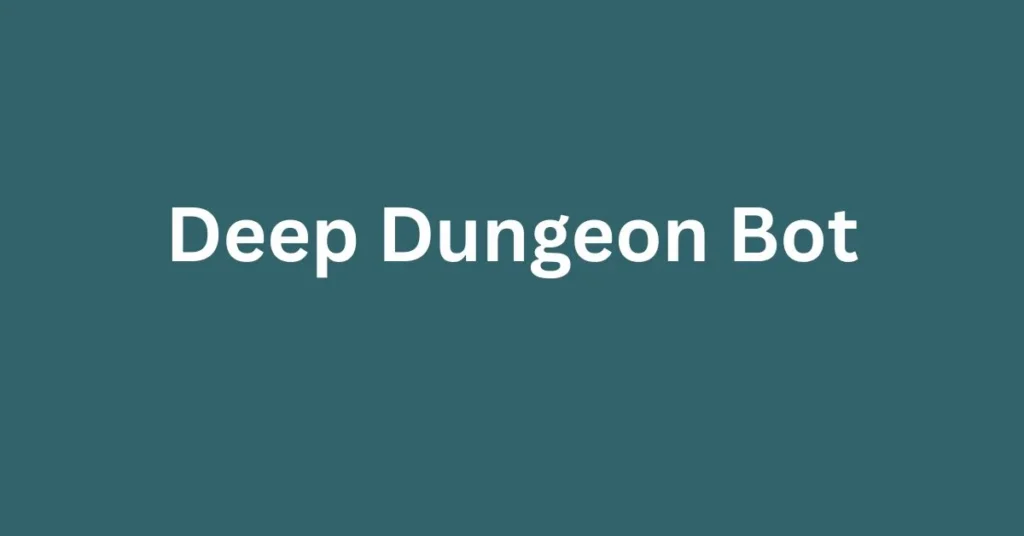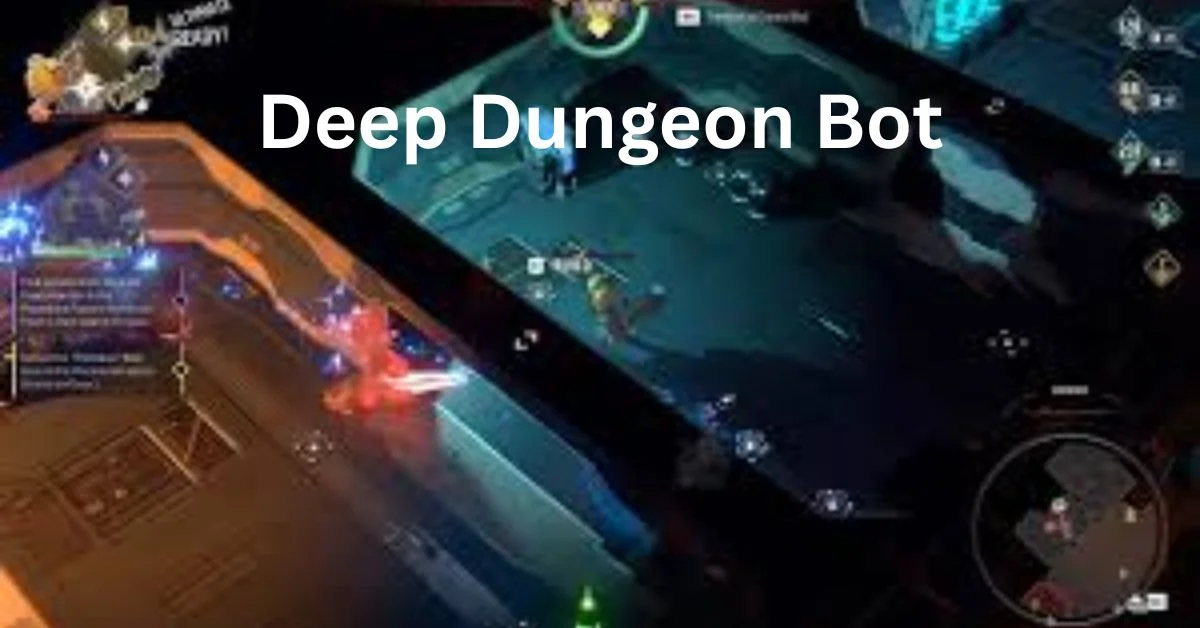In simple terms, a Deep Dungeon Bot is an automated tool designed to play specific, often repetitive game content—particularly in procedurally generated environments like “Deep Dungeons” in MMORPGs (Massively Multiplayer Online Role-Playing Games). These bots are most commonly associated with Final Fantasy XIV (FFXIV), where they navigate dungeons like “Palace of the Dead” and “Heaven-on-High” for the purposes of farming experience, items, and in-game currency. However, what started as a niche technical exploit has now grown into a broader discussion of gaming ethics, automation, and the evolving nature of play itself.
What Is a Deep Dungeon Bot?
A Deep Dungeon Bot is a script or software program that automates gameplay within deep dungeon-style instances. These dungeons are designed to be randomly generated each time, presenting new layouts and enemy placements. Bots are programmed with pathfinding algorithms, enemy detection scripts, combat routines, and loot collection protocols. The most advanced bots can even respond to combat mechanics, retreat to safe zones, or recognize boss encounters.
These bots are especially prevalent in dungeons that offer:
- Repeatable gameplay loops
- Valuable loot or currency
- High experience point (XP) returns per run
In the context of FFXIV, players often deploy bots in deep dungeons to power-level alternate classes, grind for rare loot, or farm gil.
Why Are Deep Dungeon Bots Gaining Popularity?
Automation appeals for several reasons:
1. Time Efficiency
Leveling up a new class or farming a specific item manually can take tens or even hundreds of hours. Bots reduce that time drastically.
2. Accessibility
Not all players have time for lengthy sessions. Bots allow players to progress while they focus on work, school, or family.
3. In-Game Economy
Some players use bots to farm resources, which they then sell through in-game markets or real-money transactions.
4. Technical Challenge
For developers, creating a functioning bot is an intellectual pursuit. It involves solving AI pathfinding, reactive programming, and even neural learning problems.

How Deep Dungeon Bots Work
Deep Dungeon Bots are typically built with the following components:
- Pathfinding Systems: Navigate procedurally generated floors.
- Combat Automation: Recognize enemy types and execute combat rotations.
- Loot Collection: Identify and collect treasure chests.
- Mechanic Response: Handle AoE attacks, traps, and buffs.
- Logging and Decision Trees: Record performance metrics and alter behavior over time.
Developers often use platforms like Python, Lua, or in-game scripting frameworks (if available) to build these bots. More advanced setups include OCR (Optical Character Recognition) and computer vision to interact with the game interface visually.
Are Bots Legal or Against Game Policy?
This is where things get controversial. In almost all online games, including FFXIV, the use of bots is strictly against the Terms of Service (ToS). Players caught using bots can face warnings, temporary suspensions, or permanent bans. Yet, enforcement varies greatly depending on the game and the visibility of the botting activity.
The Ethics of Using a Deep Dungeon Bot
Botting exists in a moral gray area:
Arguments in Favor:
- Time-saving for casual players
- Accessibility for disabled players
- Technological innovation and scripting practice
Arguments Against:
- Unfair advantage over manual players
- Disruption of in-game economy
- Breach of user agreements
Developers maintain that bots degrade the gaming experience for others, turning immersive, skill-based content into a transactional grind.
Impact on Game Economy and Player Experience
Bots significantly affect in-game dynamics:
- Market Saturation: Items farmed by bots flood auction houses, driving down prices.
- XP Imbalance: Players using bots may out-level others unfairly.
- Server Strain: Persistent bot traffic increases load on game servers.
- Report Fatigue: Constant botting leads to community cynicism about enforcement.
This leads to a widening gap between dedicated players and those automating their gameplay.
Detecting and Combating Bot Use
Game developers employ several tactics to detect bots:
- Behavioral Analysis: Bots tend to follow perfect, repetitive patterns.
- GM Spot Checks: Game Masters may visit suspected bot zones in real time.
- CAPTCHAs: Random verification prompts to confirm human interaction.
- Crowdsourced Reporting: Players can report suspicious behavior.
Despite this, bot developers constantly evolve their code to evade detection, creating an arms race between automation and moderation.
Botting Communities and Tools
There are entire online forums, Discord servers, and repositories dedicated to the creation and sharing of botting tools. Many operate behind paywalls, offering premium scripts and technical support. While open-source bots exist, most successful tools are part of closed ecosystems with subscription-based models.
Some tools even offer:
- Real-time dashboards
- Behavior tuning settings
- Multi-account management
These advanced bots blur the line between gaming and software engineering, appealing to tech-savvy gamers and coders.
Risks of Using Deep Dungeon Bots
While the appeal is obvious, the risks are substantial:
- Account Bans: Many players have lost years of progress for one violation.
- Security Vulnerabilities: Bots can be laced with malware.
- Financial Loss: Subscription fees for premium bots can add up.
- Community Backlash: Using bots can damage a player’s reputation.
Alternatives to Botting
For those seeking progress without automation:
- Power-Leveling Services (though also controversial)
- Mentorship or Boosting from Friends
- Scheduled Play Sessions with Efficiency Guides
- Optimized XP Rotations and Resource Management
These options keep gameplay within the boundaries of ToS while still offering progress.
The Future of Botting in Online Games
As AI and machine learning evolve, so too will bots. It’s not unthinkable that future bots could mimic human unpredictability so well that detection becomes nearly impossible. Game developers may counter with more sophisticated behavior detection, machine learning on their end, or fundamentally different dungeon designs.
Ultimately, botting is a reflection of player values. It questions what games are for: mastery, immersion, or efficiency? As the line between software and skill blurs, these questions will only become more urgent.
Conclusion
Deep Dungeon Bots are more than just tools—they’re a mirror reflecting how modern gamers interact with content, time, and community. While the short-term gains of automation can be tempting, the long-term consequences to fairness, engagement, and even account security are worth considering. In an era of rapid technological growth, players and developers alike must grapple with the implications of letting software do the playing. Choose wisely, because how you play shapes what the game becomes.
FAQs
1. What exactly does a Deep Dungeon Bot do?
It automates movement, combat, and loot collection in randomized dungeon floors, usually to farm XP or items.
2. Is using a bot in FFXIV legal?
No. Bot use violates Square Enix’s Terms of Service and can lead to account suspension or permanent bans.
3. Can bots affect other players in the dungeon?
Yes, especially if used in matchmaking. Bots may not react properly to team mechanics, harming party performance.
4. How can I report a suspected bot?
Use the in-game reporting tools to flag suspicious behavior. Game Masters investigate these reports regularly.
5. Are there any legitimate alternatives to bots for grinding XP?
Yes, including optimized XP routes, mentorship bonuses, and group runs with efficiency-focused players.
For more information, click here.









